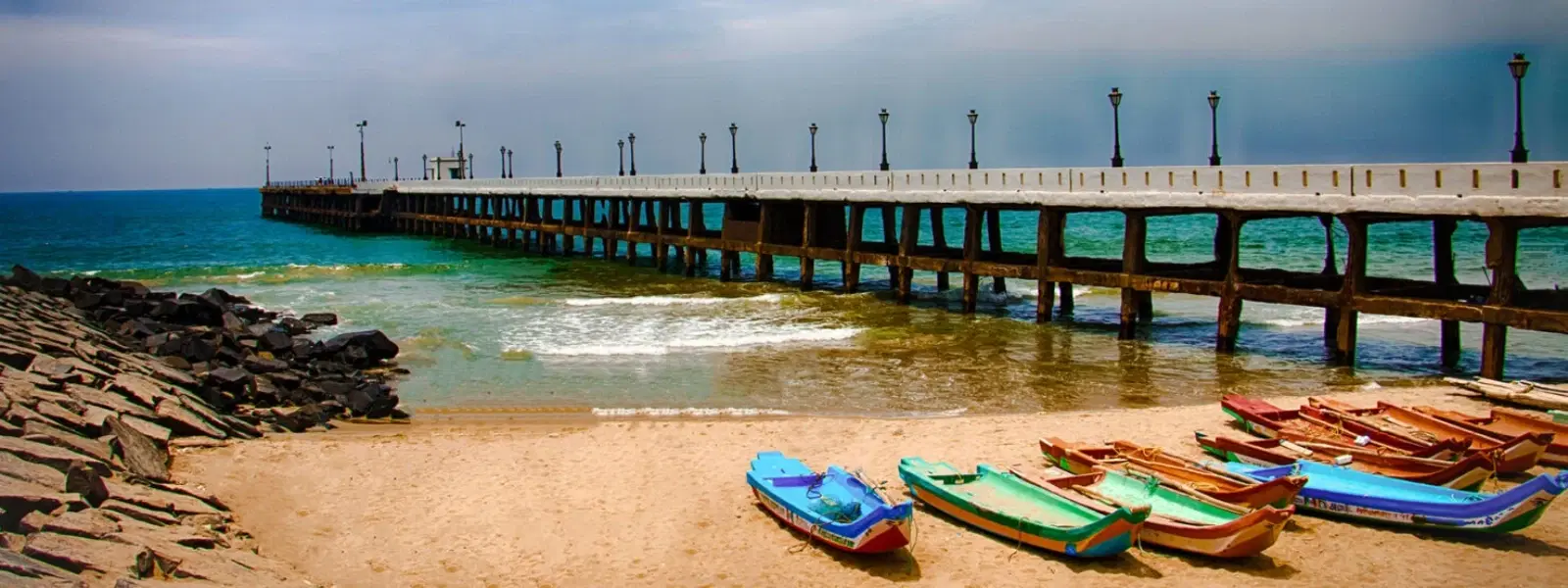
Hotels
•04 min read

India's coastal regions are a sensory feast, where the rhythmic crashing of waves meets the lively chatter of fishing communities. The air is tinged with salt, and the panorama of colorful fishing boats on serene waters evokes a sense of deep-rooted history and vibrant heritage. This blog post invites you to explore the fishing villages of India, a hidden treasure trove that celebrates cultural traditions, economic significance, and ecological sustainability. Discover the unique blend of age-old practices and modern challenges that shape these coastal villages and gain insight into their vital role in the marine economy.
Across India’s extensive coastline, fishing villages thrive in diverse settings. States like Kerala, Tamil Nadu, Maharashtra, and Gujarat are home to communities that have engaged with the sea for centuries. Each area showcases its own character—Kerala's backwaters and palm-lined beaches, Tamil Nadu’s bustling harbors, Maharashtra’s lively coastal towns, and Gujarat's dynamic ports all contribute to a rich mosaic of coastal life.
Beyond the prominent seaports lie smaller fishing villages that exude an authentic charm. Places like Vypin in Kerala offer intimate glimpses into traditional lifestyles, where generations continue to rely on sustainable fishing techniques. Similarly, Dapoli in Maharashtra invites visitors to step back in time and admire the simple, serene existence that resonates with the traits of true cultural heritage. These quaint communities embody the essence of coastal resilience and time-honored practices.
At the heart of each fishing village lies a rhythm of life deeply intertwined with the sea. The daily routines of these communities pulse with traditions and rituals—early morning fishing expeditions, communal meals, and local festivals that honor the bounty of the ocean. Family ties run strong, and the community spirit provides a safety net that has sustained livelihoods for centuries. The Indian coastal lifestyle is one of simplicity, resilience, and a unique connection to nature.
Fishing in India is not merely an occupation—it is a rich culture passed down through generations. Villagers employ a fascinating array of techniques and tools, from traditional cast nets and handlines to more modern equipment that aids in ensuring a steady catch. Festivals and ceremonies, such as local boat races and sea-related celebrations, underscore the cultural importance of fishing. These traditions not only sustain cultural heritage but also fortify community bonds.

Did you know? Many fishing communities in India still use age-old techniques like cast nets and handlines, passed down through generations. These methods not only preserve cultural heritage but also promote sustainable fishing practices.
The influence of fishing villages on India’s marine economy is profound. Fishermen provide essential contributions by not only harvesting seafood but also sustaining local trade and informal employment. These coastal communities support a network of ancillary businesses—from boat-making to repair services—fueling economic activity along the shoreline. However, challenges such as fluctuating fish stocks, climate change, and environmental degradation pose ongoing threats to their livelihoods.
Seafood markets are bustling epicenters of commerce and culture. Traditional hubs like Sassoon Dock in Mumbai and the Cochin Fish Market are vibrant spaces where fresh catches meet eager buyers. In these markets, the exchange is not just about fish but the passing of stories and traditions, showcasing the integral role of seafood markets in the local economy. Walking through these markets, visitors can experience a sensory overload of colors, scents, and the authenticity of coastal commerce.
While the life of coastal communities is rich in tradition, they are increasingly confronted with modern challenges. Overfishing, pollution, and habitat destruction threaten the delicate balance of marine ecosystems. The rapid expansion of urban areas and the rising influx of tourists further exacerbate these issues, placing stress on traditional practices that have preserved the environment for generations.
In response, local communities and organizations are pioneering sustainable initiatives. Efforts include promoting eco-friendly fishing methods, embracing technology to monitor fish stocks, and collaborating with government bodies to craft policies that safeguard marine habitats. Conservation programs are making headway, urging a balance between economic demands and environmental stewardship. These initiatives are vital for ensuring that fishing villages continue to thrive while preserving nature’s bounty.

For those seeking to immerse themselves in the authentic coastal experience, several fishing villages in India stand out as must-visit destinations. Kovalam, with its pristine beaches and vibrant local communities, beckons travelers with its blend of scenic beauty and traditional charm. Meanwhile, Malvan offers a relaxed vibe with delectable seafood and a glimpse into a lifestyle deeply anchored in maritime culture. Puri, renowned for its spiritual festivals, provides a unique mix of cultural heritage and coastal beauty.
Fishing harbors are more than just workspaces—they are the lifeblood of coastal communities, connecting small villages to larger markets and cities. Iconic harbors such as Chennai Port and Veraval Harbor serve not only as centers of trade but also as symbols of maritime tradition. These harbors encapsulate the essence of the fishing culture in India, providing a seamless connection between rural heritage and urban economic activity.
Kerala, Tamil Nadu, and Maharashtra are considered top states for fishing due to their extensive coastlines and thriving fishing communities.
Yes, fishing is the primary livelihood in most coastal villages, with communities deeply involved in both traditional and modern fishing practices.
A fishing village is a small community located near the coast, where the primary occupation of residents revolves around fishing and related activities.
The exploration of India's fishing villages reveals a tapestry of traditions interwoven with economic and environmental realities. These coastal communities are a celebration of heritage and resilience, showcasing a dynamic synergy between nature and culture. Preserving their history and promoting sustainable practices is essential for the continued prosperity of these regions. This narrative of fishing villages in India is a call to appreciate the beauty of a lifestyle rooted in both tradition and modernity.